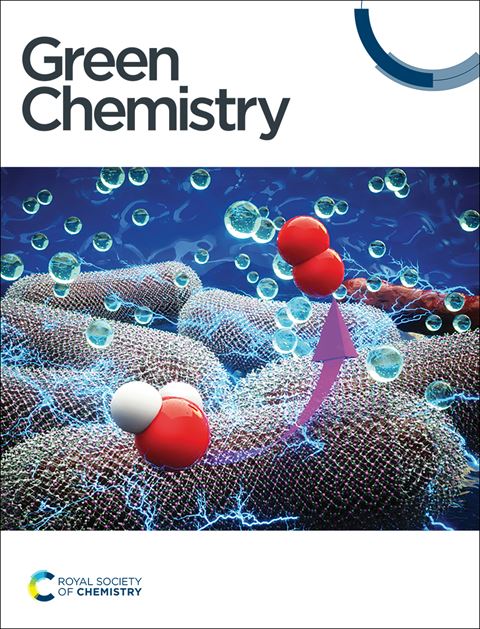Integrated biorefinery routes to transform furfural waste into 2G biofuels and PFOA-adsorbing biochar†
IF 9.3
1区 化学
Q1 CHEMISTRY, MULTIDISCIPLINARY
引用次数: 0
Abstract
This study presents a cutting-edge decentralized biorefinery approach that valorizes furfural residues (FRs) into high-value products, including ethanol, bio-oil (emphasizing bio-phenols), and perfluorooctanoic acid (PFOA)-adsorbing biochar. Employing an advanced acid/glycerol pretreatment with fatty alcohol polyoxyethylene ether (AEO), surfactant significantly enhances FR fractionation of FRs. The AEO plays a crucial role in pretreatment by weakening cellulose-lignin interactions, enhancing pore characteristics, and preventing pseudo-lignin formation in FRs. These modifications increase cellulose hydrolysis efficiency, facilitating the conversion of cellulose-rich residues into 198 g kg−1 ethanol through hydrolysis and fermentation. The remaining lignin undergoes pyrolysis, producing 184 g kg−1 bio-oil, with a phenol content of 77.5% and 237 g kg−1 biochar. The biochar's potential for adsorbing PFOA is evaluated, costing just 1.5–1.8 cents per gram, offering a sustainable method for environmental remediation. Detailed physicochemical and computational analyses reveal that PFOA adsorption on biochar surfaces involves electrostatic interactions, hydrogen bonding, and hydrophobic interactions. The study further evaluates this approach's economic and environmental viability, highlighting a minimum biochar selling price of US$ 41.81 per ton FRs and CO2 emissions of 936 g CO2 per kg biochar. This research reaffirms the potential of FRs as a sustainable feedstock for biofuel and bioproduct production, advancing circular bioeconomy principles.

求助全文
约1分钟内获得全文
求助全文
来源期刊

Green Chemistry
化学-化学综合
CiteScore
16.10
自引率
7.10%
发文量
677
审稿时长
1.4 months
期刊介绍:
Green Chemistry is a journal that provides a unique forum for the publication of innovative research on the development of alternative green and sustainable technologies. The scope of Green Chemistry is based on the definition proposed by Anastas and Warner (Green Chemistry: Theory and Practice, P T Anastas and J C Warner, Oxford University Press, Oxford, 1998), which defines green chemistry as the utilisation of a set of principles that reduces or eliminates the use or generation of hazardous substances in the design, manufacture and application of chemical products. Green Chemistry aims to reduce the environmental impact of the chemical enterprise by developing a technology base that is inherently non-toxic to living things and the environment. The journal welcomes submissions on all aspects of research relating to this endeavor and publishes original and significant cutting-edge research that is likely to be of wide general appeal. For a work to be published, it must present a significant advance in green chemistry, including a comparison with existing methods and a demonstration of advantages over those methods.
 求助内容:
求助内容: 应助结果提醒方式:
应助结果提醒方式:


